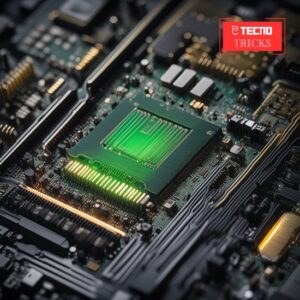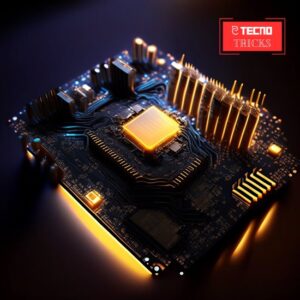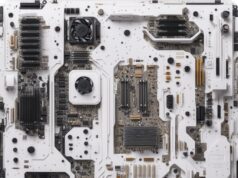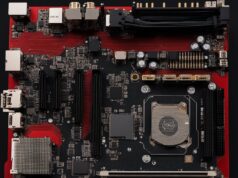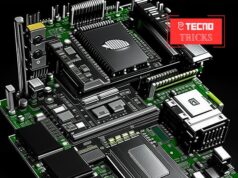Are you one of those who hit the panic button the moment you see that ominous DRAM light flickering on your motherboard? You’re not alone. Many believe that when the DRAM light comes on, it’s game over for their PC. But fear not, because in this blog, we’re going to demystify the DRAM light and help you understand what it really means.
Understanding DRAM and Its Importance
Before we delve into the specifics of the DRAM light, let’s take a moment to understand what DRAM actually is and why it’s so crucial for your computer’s performance. DRAM, or Dynamic Random Access Memory, serves as the temporary storage for data that your computer needs to access quickly. It’s like your computer’s short-term memory, allowing it to run multiple programs simultaneously without slowing down to a crawl.
Now, you might be wondering, why does my motherboard need a dedicated light for DRAM? Well, think of it as your computer’s way of communicating with you. When everything is running smoothly, the DRAM light remains off. But if there’s an issue with your RAM modules, such as compatibility issues or a faulty stick, the DRAM light will illuminate, alerting you to a potential problem.
Common DRAM Issues on Motherboards
So, what are some of the common issues that can trigger the dreaded DRAM light on your motherboard? One of the most common culprits is incompatible RAM modules. If the RAM you’ve installed isn’t compatible with your motherboard or other system components, it can lead to stability issues and trigger the DRAM light.
Another possible cause is faulty RAM modules. Over time, RAM modules can degrade or become damaged, leading to errors and instability in your system. If you suspect that one of your RAM sticks is faulty, you can try removing it and testing your system with the remaining sticks to see if the issue persists.
In addition to compatibility and hardware issues, software problems can also trigger the DRAM light. Outdated BIOS firmware or incorrect memory settings in the BIOS can cause your motherboard to incorrectly detect DRAM issues and illuminate the light unnecessarily.
Understanding the DRAM Light
Now that we’ve identified some of the common issues that can trigger the DRAM light, let’s take a closer look at what it actually means. When the DRAM light comes on, it typically indicates that your motherboard has detected an issue with the DRAM modules. This could be due to compatibility issues, faulty RAM, or incorrect memory settings.
It’s important to note that the DRAM light isn’t always a cause for panic. Sometimes, simply reseating the RAM modules or adjusting the memory settings in the BIOS can resolve the issue. However, if the DRAM light continues to illuminate after troubleshooting, it may be necessary to replace the faulty RAM or seek professional assistance.
Don’t Panic: Troubleshooting DRAM Problems on Your Motherboard
If you’ve ever encountered the dreaded DRAM light on your motherboard, you might have felt a surge of panic. But fear not, because in this section, we’re going to walk you through some simple troubleshooting techniques to help you address DRAM issues and get your system back up and running smoothly.
Identifying the Issue
When the DRAM light on your motherboard illuminates, it’s your computer’s way of telling you that there may be an issue with your DRAM modules. But before you start panicking, take a deep breath and try to identify the root cause of the problem.
The first step is to check for compatibility issues. Ensure that the RAM modules you’ve installed are compatible with your motherboard and other system components. Consult your motherboard’s manual or visit the manufacturer’s website to verify compatibility.
Reseating the RAM
Sometimes, simply reseating the RAM modules can resolve DRAM issues. Power down your computer, unplug it from the power source, and remove the RAM modules from their slots. Then, carefully reinsert the modules one by one, ensuring that they’re securely seated in their slots.
Testing Individual Modules
If reseating the RAM doesn’t solve the problem, try testing each RAM module individually. Remove all but one RAM module from your motherboard and power on your computer. If the DRAM light remains off, the removed module may be faulty. Repeat this process with each module until you identify the faulty one.
Updating BIOS Firmware
Outdated BIOS firmware can also cause DRAM issues on your motherboard. Check the manufacturer’s website for BIOS updates and follow the instructions to install the latest firmware. Be sure to read the release notes carefully, as BIOS updates can sometimes introduce new compatibility issues.
Adjusting Memory Settings
If you’ve recently made changes to your memory settings in the BIOS, try reverting to the default settings to see if that resolves the issue. Incorrect memory settings can cause your motherboard to incorrectly detect DRAM issues and illuminate the light unnecessarily.
Seeking Professional Assistance
If you’ve tried all of the above troubleshooting techniques and the DRAM light continues to illuminate, it may be time to seek professional assistance. Contact your motherboard manufacturer or a qualified technician for further assistance in diagnosing and resolving the issue.
Understanding the DRAM Light
The DRAM light serves as a beacon, alerting you to potential issues with your system’s memory. It’s your motherboard’s way of saying, “Hey, something’s not quite right here.” But what exactly triggers the DRAM light to illuminate?
When your motherboard detects a problem with the DRAM modules, whether it’s due to compatibility issues, faulty RAM, or incorrect memory settings, it will activate the DRAM light to grab your attention. It’s a signal that shouldn’t be ignored, but it’s also not necessarily cause for panic.
Pros and Cons of the DRAM Light
Like any diagnostic tool, the DRAM light has its pros and cons. On the positive side, it provides a clear indication that there may be an issue with your system’s memory. This can be incredibly helpful in pinpointing the source of the problem and taking appropriate action to resolve it.
However, the DRAM light can also be a source of frustration and confusion. Its simple on/off indicator doesn’t provide much insight into the specific nature of the problem. Is it a compatibility issue? A faulty RAM module? Or something else entirely? Without further investigation, it’s hard to say for sure.
Verdict: Is the DRAM Light Friend or Foe?
So, is the DRAM light your friend or your foe? The answer, as with most things in life, is a bit of both. While it can be a valuable tool for diagnosing memory-related issues, it’s important not to rely on it as the sole indicator of system health.
Instead, use the DRAM light as a starting point for troubleshooting, but be prepared to dig deeper if necessary. Test your RAM modules individually, check for compatibility issues, and ensure that your BIOS firmware is up to date. And if all else fails, don’t hesitate to seek professional assistance.
In the end, the DRAM light is just one piece of the puzzle when it comes to maintaining a healthy and functional PC. By understanding its strengths and limitations, you can navigate the world of motherboard diagnostics with confidence and peace of mind.
Frequently Asked Questions (FAQs)
Q: What does the DRAM light on my motherboard mean? A: The DRAM light indicates that there may be an issue with your system’s memory, such as compatibility issues, faulty RAM modules, or incorrect memory settings.
Q: Should I panic if the DRAM light comes on? A: No need to panic! While the DRAM light can be concerning, it’s often just a sign that something needs attention. Take a deep breath, and we’ll help you troubleshoot the issue.
Q: How can I troubleshoot DRAM problems on my motherboard? A: Start by checking for compatibility issues with your RAM modules. Then, try reseating the RAM, testing individual modules, updating BIOS firmware, and adjusting memory settings in the BIOS.
Q: What if none of the troubleshooting steps resolve the issue? A: If you’ve exhausted all troubleshooting options and the DRAM light persists, it may be time to seek professional assistance from your motherboard manufacturer or a qualified technician.
Q: Are there any downsides to relying on the DRAM light for diagnostics? A: While the DRAM light can be a helpful indicator, it doesn’t provide detailed information about the specific nature of the problem. Additional investigation may be necessary to fully understand and address the issue.
Q: How can I prevent DRAM issues in the future? A: To minimize the risk of DRAM problems, ensure that your RAM modules are compatible with your motherboard, keep BIOS firmware updated, and handle RAM modules with care during installation and removal.
Q: Can I ignore the DRAM light if my computer seems to be running fine? A: While it’s tempting to ignore the DRAM light if your computer appears to be functioning normally, it’s still important to investigate the issue. Ignoring potential problems now could lead to more serious issues down the road.


